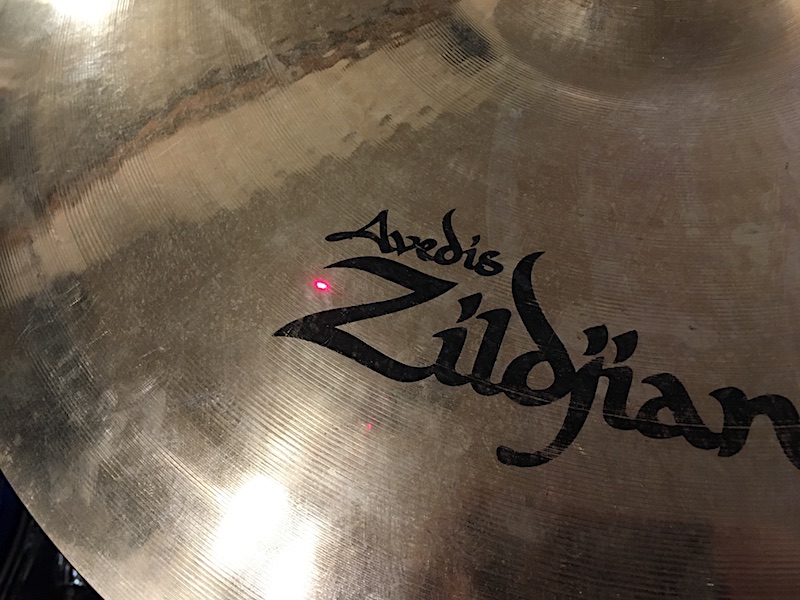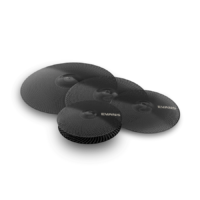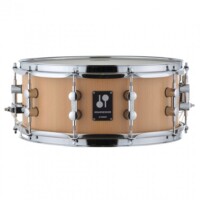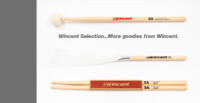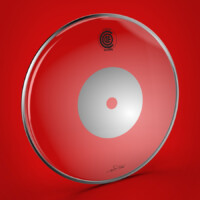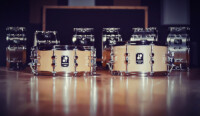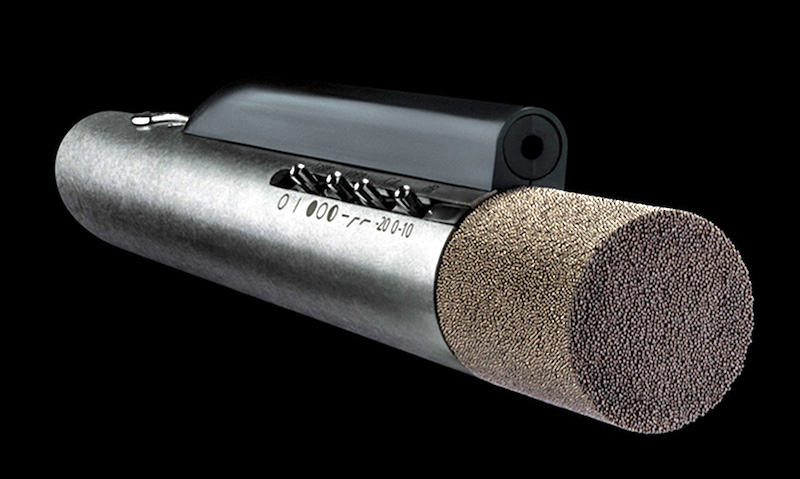
The Aston Starlight. Check out the shark fin laser pointer – VERY James Bond, but entirely practical and very useful.
Drummer’s relationships with microphones have changed over the last ten years or so. Ten years ago, if you were a drummer and you had your own microphones, then you either had your own recording studio, or you worked in a really serious function band with loads of gigs.
Now of course, everyone has their own microphones – you only have to go down the closest music pub to find a drummer setting up mics on their kit on a Friday night. Ten years ago, a larger venue was treated as a proof of manliness (or womanliness) and a chance to hit REALLY hard, but now, drummers will mic their cajons and frame drums for the smallest coffee shop gig, if it requires it.
So many more drummer have their own mics, but have you ever thought why? Well, firstly, drums only have a limited dynamic range, and it does’t matter if you are built like the proverbial outhouse – you aren’t going to fill Wembley with your drumming without some form of help. Also drums choke when hit too hard so they don’t always sound best when played hard. And then it comes down to the gear its self – unless you know what you are doing, from the back of a pub a £500 kit will sound pretty similar to a £5000 kit. Why go to the trouble of having a lovely kit if no one can hear it?
So at first everyone went out and bought cheap Chinese mics and felt much better for it… until they realised that their £5000 kit was being put through the PA through a £150 set of cheap drum mics – isn’t that like buying a Ferrari and putting the cheapest Malaysian tyres on it? That doesn’t make too much sense.
Also, drummers have got MUCH more into the actual physics of making a kit sound great through microphones – more and more drummers are recording at home, doing on line sessions and demos, and also (of course) doing videos for YouTube and the like.
Ten years ago if you’d asked 100 random drummers about Glynn Johns Technique, 99 of them would have looked at you blankly. Ask 100 drummers now, and I’m sure the percentage who knew what you were talking about is MUCH, MUCH higher. (if you don’t know what it is, Google Glynn Johns technique now! – It’s a method for recording a kit using, in its most minimal form, one bass drum mic and two overheads, and it can give you stunningly natural results).
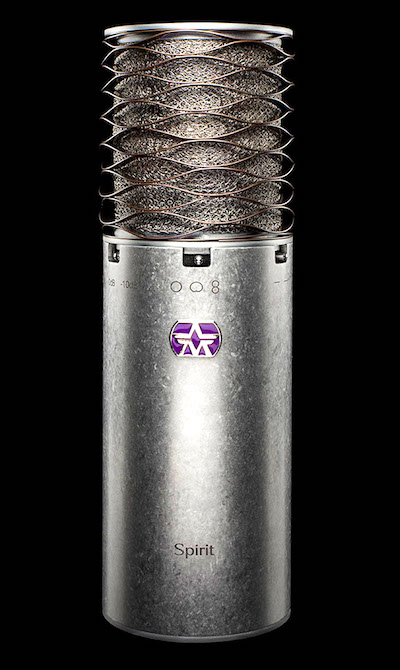
Amazing clarity, and the best vocal sound I have ever had in my studio. Oh, and works great on drums too!
Aston?
So when UK company Aston asked us if we’d like to have a look at some of their microphones, of course we said yes. If you don’t know Aston there is another page here where we talk to them and find out a bit more about the company
So what of the microphones? Well, we were sent two Starlight 20mm condenser mics and one Spirit 1” condenser (apologies for mixing metric and imperial, but thats how it goes). If you mic conventionally you might wonder why all the mics are condenser – surely its normal in ‘drum world’ to mic a bass drum with a dynamic? – but these mics all are real ‘Swiss Army Knife’ products and can be pretty much used on anything (within reason). I’m going to approach this from a drummers perspective (obviously) and assume people will be using the Spirit on the kick and the Starlights as overheads.
All the mics are very nicely packaged (in very eco friendly packaging) and feel very solid and very, well built. I wont describe them as you can see them in the photos, but needless to say, if they were in your hands, you wouldn’t be disappointed with the look or the feel. The finish all the mics is a ‘tumbled’ one which means before they were constructed, the body was put in a big vibrating tub full of conical ceramic beads for a few hours. Its a lovely finish – it sort of looks distressed and immaculate at the same time, and doesn’t pick up finger prints or any of the other things that marks mics, plus it is much cheaper than the sort of finishes that almost everyone else uses, so helping to keep the price down. However, it also is incredibly green – no chemicals, no fumes, no waste. Very cool.
Starlight
When they were setting out to make the Starlights, Aston wanted to make a mic which would suit everybody. However, this apparently is rather tricky as half the Aston 33 (the guidance/test panel, made up of producers and musicians, and now numbering considerably more than 33) wanted a vintage sounding mic and half wanted a modern sounding mic. To get around this, the Starlight has three way switch that (using clever filtering) allows the mic to have a warm vintage voice, or a bright modern voice, or even a hybrid voice which has the brightness of the modern added to the warm low end of the vintage by the sound of it. It’s simple, works very well and means you dont have to have two sets of overheads depending on the sound you need.
The mics come with a very nice Rycote shock mounting, which removes all stand borne noise, and have the usual low cut (to filter out as much drum sound from your overheads as possible for instance) and dB cut to stop the mic being overloaded (by the loud drummers out there). But then, the Starlight has something special up its sleeve…
 The Starlight has a weird shark fin type, black protrusion down the side of the body. This houses a laser which is to be used for aiming the mic from a distance. Now, initially when I first heard about the Starlight ages ago, I thought this was a gimmick, but having tried it, I now think this should standard on all instrument mics.
The Starlight has a weird shark fin type, black protrusion down the side of the body. This houses a laser which is to be used for aiming the mic from a distance. Now, initially when I first heard about the Starlight ages ago, I thought this was a gimmick, but having tried it, I now think this should standard on all instrument mics.
When I first set up the Starlights over a kit, I thought I’d aim them without using the lasers, and then see how far out I was in my aim by turning the laser on. I’m a big fan of the aforementioned Glynn Johns method so I often find myself pointing a mic which is near the floor tom at the hi hat over the other side of the kit (for instance). Well, the lasers showed that I was consistently way out in my aim. Waaaay out.
More data here https://www.astonmics.com/EN/product/Mics/Starlight
Spirit
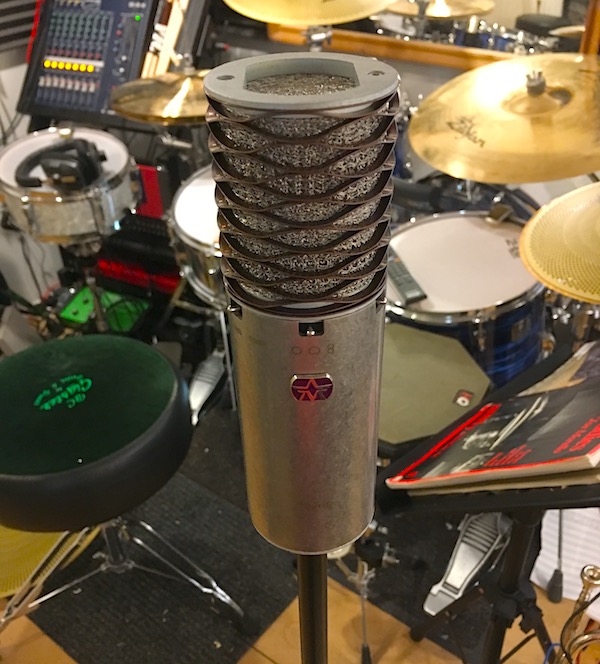 The Spirit is a much more sizeable affair which doesn’t come with a shock mount. This is because the whole internal mechanism is isolated from the body (as I understand it) so it can be mounted conventionally, and to hell with stand borne noise.
The Spirit is a much more sizeable affair which doesn’t come with a shock mount. This is because the whole internal mechanism is isolated from the body (as I understand it) so it can be mounted conventionally, and to hell with stand borne noise.
Being a LDC (large diaphragm condenser), it not really advisable to go sticking the Spirit in the hole in the front of your kick, even though it can handle 138dB if required to. Aston recommend (in their useful Aston Microphones Owners Manual which is included with all mics) placing the Spirit 30cm in front of the bass drum head for the optimum overall sound.
The mic has the usual -10 and -20dB pads and omni/cardioid/Fo8 polar patterns and 80Hz low cut filter.
This isn’t drumming related but when I first turned the Spirit on it was mounted on the stand I usually use for recording my voice for podcasts. I’ve got to say that in comparison with the mic I usually use, the Spirit was frighteningly good. For the first time in my studio I think I experienced the voice I’d like to hear whenever I record myself talk, courtesy of the Spirit, a Focusrite preamp and some DT150 headphones. Lovely!
Again, the body has been tumbled and is incredibly tactile. If you look online you’ll find video of James Young (MD of Aston) deliberately knocking a Spirit against a desk to show one of the unique properties of the mic. Because of the head design, it can take serious knocks (not recommended) which can knock the head out of shape totally. However, if this happens, it can easily be pushed back into shape, while still protecting the diaphragm.
More data here https://www.astonmics.com/EN/product/Mics/Spirit
In Use
I tried the mics in a variety of situations as one would, which included recording acoustic kits, recording cajon, recording speech (as I was so impressed with the sound of the Spirit) and small hand held percussion. I really don’t think there is a job these mics (as a combo of Starlight and Spirit) couldn’t do, or at least have a very, very good go at.
The sound was faultless – a little flattering in places, but nothing which gave too much noticeable character to the recording, and anyway, it’ll make your recording sound all the better for it. Stand out moments for me were when I took off my headphones when I had been recording acoustic kit and hit the dark, left hand crash. The sound I heard through my ears was exactly the same as what I had been listening to through the headphones. I had a weird “have my headphones stopped working?” moment before realising I was being stupid. The clarity and signal path meant that what I was hearing in my cans was exactly what I heard sitting in front of the cymbal. It should always be like that, but most of the time, it isn’t.
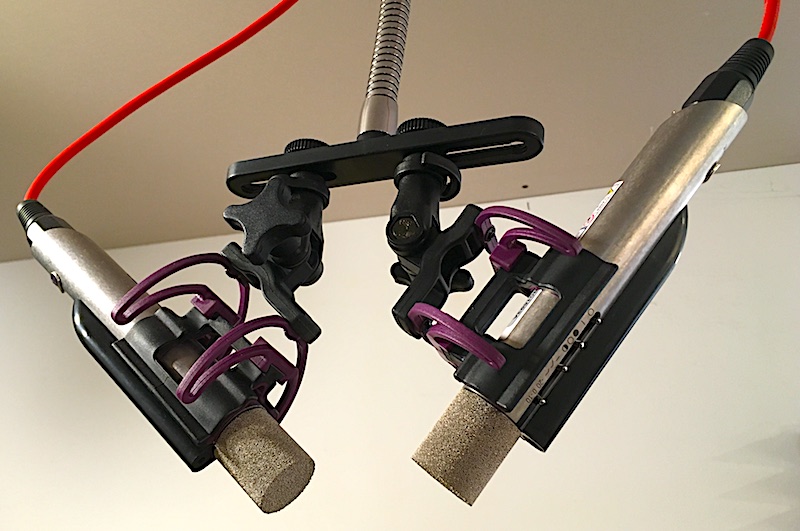 The Starlights also made me realise that it was probably time to retire my existing overheads.
The Starlights also made me realise that it was probably time to retire my existing overheads.
The Spirit was particularly open and natural sounding. It was a joy to use on everything I tried it on. Unfortunately I didn’t get a chance to try it on any proper singers but I know it would have been amazing if the speech recording was anything to go by.
On a totally undamped 16” bass drum, the sound captured from out front was lovely and real – very transparent, just as if I’d had my head in front. On a nice snare with brushes, every slight flick or swirl was perfectly placed into my headphones – it was like turning the drum up to 11 (in best Spinal Tap style).
While using all three mics in a Glynn Johns position, the sound was just so lovely and open that I found it quite hard to stop playing. Just for that, these are on my shopping list.
The only slightly different thing I noticed with both models was the reaction time to being powered on, or having the polar pattern changed. My current overheads power up almost instantly – I can hit the the phantom power on my desk and start to play kit immediately. The Starlights take about 10 seconds to properly wake up and they have a lovely fade in where real life floods into your headphones after a few moments pause.
The same was true of the Spirit – the first time I changed the polar pattern I thought I had broken the mic. And then slowly the new pattern faded in and peace was restored. This is not a criticism, just an observation, but its something I had to re-remember every time I used them.
In Conclusion
I cant fault these microphones in any way. The performance was better than I expected, the features (I’m particularly thinking the laser here) were very welcome once they had proven their worth, and the build quality was all very impressive. That just left the cost.
When reviewing products like these, I try, if at all possible, to avoid knowing the price, so I can concentrate on what the product does, and then form an opinion about what they probably cost. I was genuinely surprised at the street price of these mics. The Starlights were about 60% of what I was expecting, and the Spirit was less than half the price I thought it would be when compared to similar performing mics I have used in the past.
I didn’t use them for any live work during the test period. I’d love to use the Starlights as overheads for anything, but I’d probably use a dynamic kick mic in place of the Spirit on all but the largest stages as using the Spirit really did remind me how noisy the world is (and how sensitive a microphone it is)! A noisy guitar amp close your drumkit is not going to improve your bass drum sound through the PA, put it that way…
But, as I do less live work now, and more in my studio, and I generally use full front heads on my bass drums and don’t poke a mic inside, and generally work at the quieter end of the volume spectrum, I was in absolute heaven.
So overall, I was really very, very impressed.And its a UK company. And they are affordable. Whats not to like?
Now where’s my Christmas list..?
Simon Edgoose
December 2018
PS Because we were so impressed with the Starlight and the Spirit, we are going to start using the Spirit and Starlight mics for all the mikedolbear.com videos going forward, so I’ll be sending these (reluctantly) onto Dave Bateman in the near future.

